If your dog is sleeping, that means she has Urinary Incontinence (or UI) for short. This means she cannot control the leakage. We must differentiate UI from Inappropriate Elimination (IE), which means a dog can control the bladder, but still pees when and where it shouldn’t.
What causes UI? And, why does it happen when a dog is asleep at night?
There are 13 reasons why urinary incontinence happens, and they are all related to various health issues your dog can either develop during its lifetime or if it was born with it.
Don’t worry – even though it sounds scary reading there could be so many health issues behind it, most of these issues can be treated successfully.
Of course, they do require professional help.
Why Does My Dog Pee In Her Sleep?
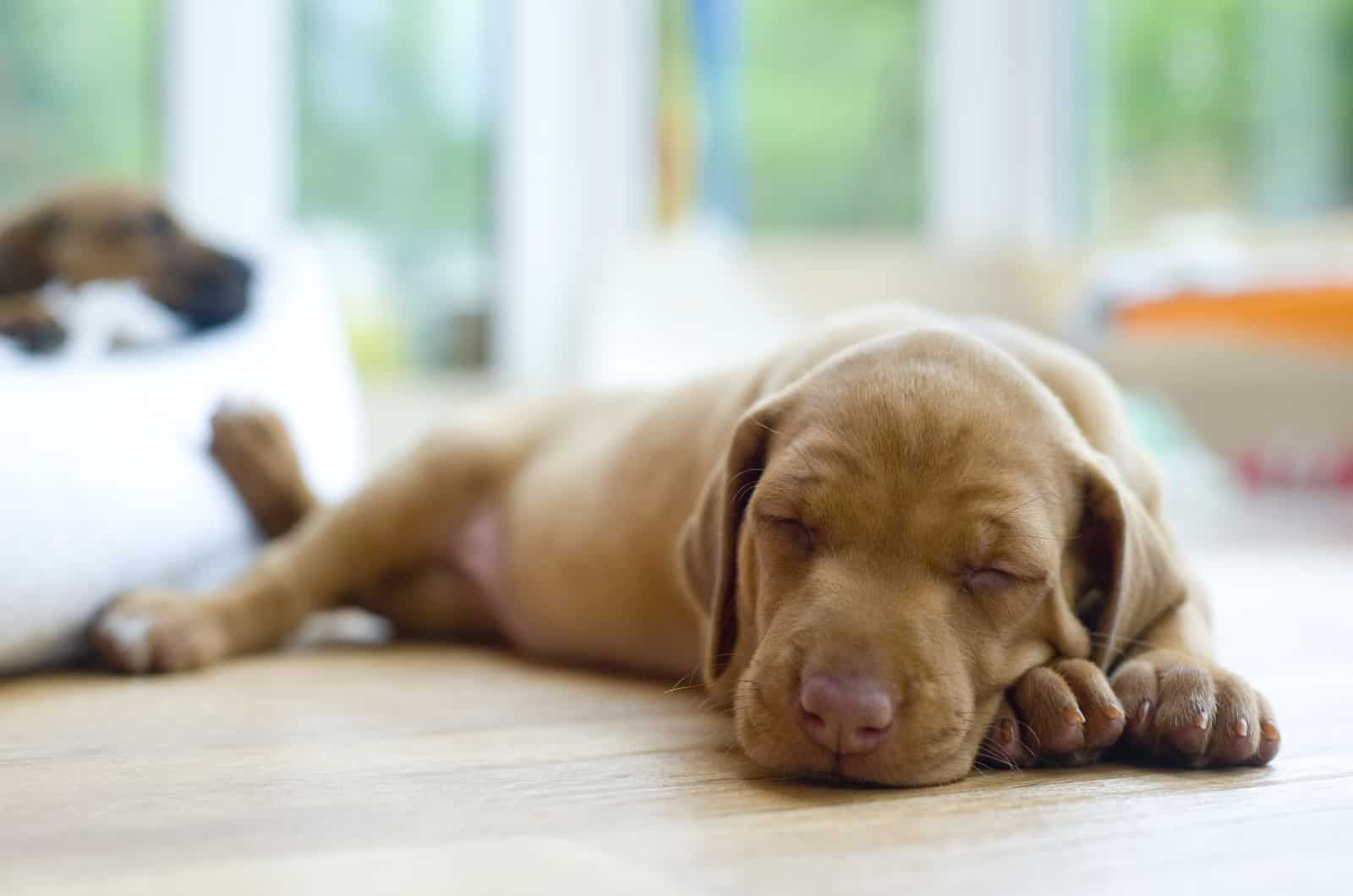
Let’s make one more thing clear – this is not a behavioral issue, but a medical one. That’s why I made the difference between UI and IE. The latter is a behavioral issue that can also be driven by some medical problems.
However, for UI, you need a licensed veterinarian that can properly diagnose and set the proper treatment for the issue behind this problem.
Because it happens during the night when the dog is asleep, the dog has no conscious control over it, which means the best option is to take your dog to the vet, no matter if it’s a puppy or an adult dog.
Here are 13 reasons why it is best to take your dog to the vet if you notice she pees in her sleep.
1. Urinary Tract Infection (UTI)
UTIs can happen to any dog, no matter if it’s a purebred or a mixed dog. It can also happen to both male and female dogs, old and young. However, Urinary Tract Infections are more common in female dogs.
Why? Because of the anatomy.
A female dog’s urethra is shorter than a male’s urethra, which makes female dogs more susceptible to bacterial infections – UTIs.
It literally means that bacteria have a shorter path to go into a females’ urethra than in males. Also, it is normal for female dogs to have small urine leakages during the night.
These leakages are very small, and cannot be noticed on the bed, but they can be noticed on the fur. If not cleaned properly, these wet patches of fur can make the perfect spot for bacterial infections.
The bacterial infection causes irritation of the bladder sphincter, which causes the sphincter to “get loose” and release urine from the bladder when the dog is asleep.
2. Kidney Disease

A dog that has kidney disease will show other symptoms as well:
- Bad breath
- Drinking water more often
- Vomiting
- Diarrhea
- Lethargy
As for peeing in her sleep, your dog will start with night Urinary Incontinence, but if she has kidney disease, the UI will soon happen during the day, too.
If you notice your dog has some of the mentioned symptoms, and UI, it is very important to take her to the vet.
Kidney diseases develop rapidly in dogs, and they can soon lead to kidney failure. When that happens, there is not much we can do for our dogs. Their symptoms will worsen, and turn into seizures. Your vet will probably tell you what the euthanasia options are, and when you should do it.
3. Spinal Cord Injury
If your dog injures its spinal cord, one of the results can be Urinary Incontinence. Sometimes, it’s joined by fecal incontinence as well.
The injuries can happen in many ways; however, car accidents and a dog getting hit by a car are the most usual ways for a dog to get its spine injured.
But, basically, any accident involving the spine and the spinal cord can lead to injury.
If it is a spinal cord injury, your dog will also most likely be in pain, and will show other symptoms. She might have problems walking, there will be swelling around the injured area, and yes – she can pee in her sleep.
However, when spinal cord injury happens, your dog can pee both during the day and while asleep.
4. Bladder Stones
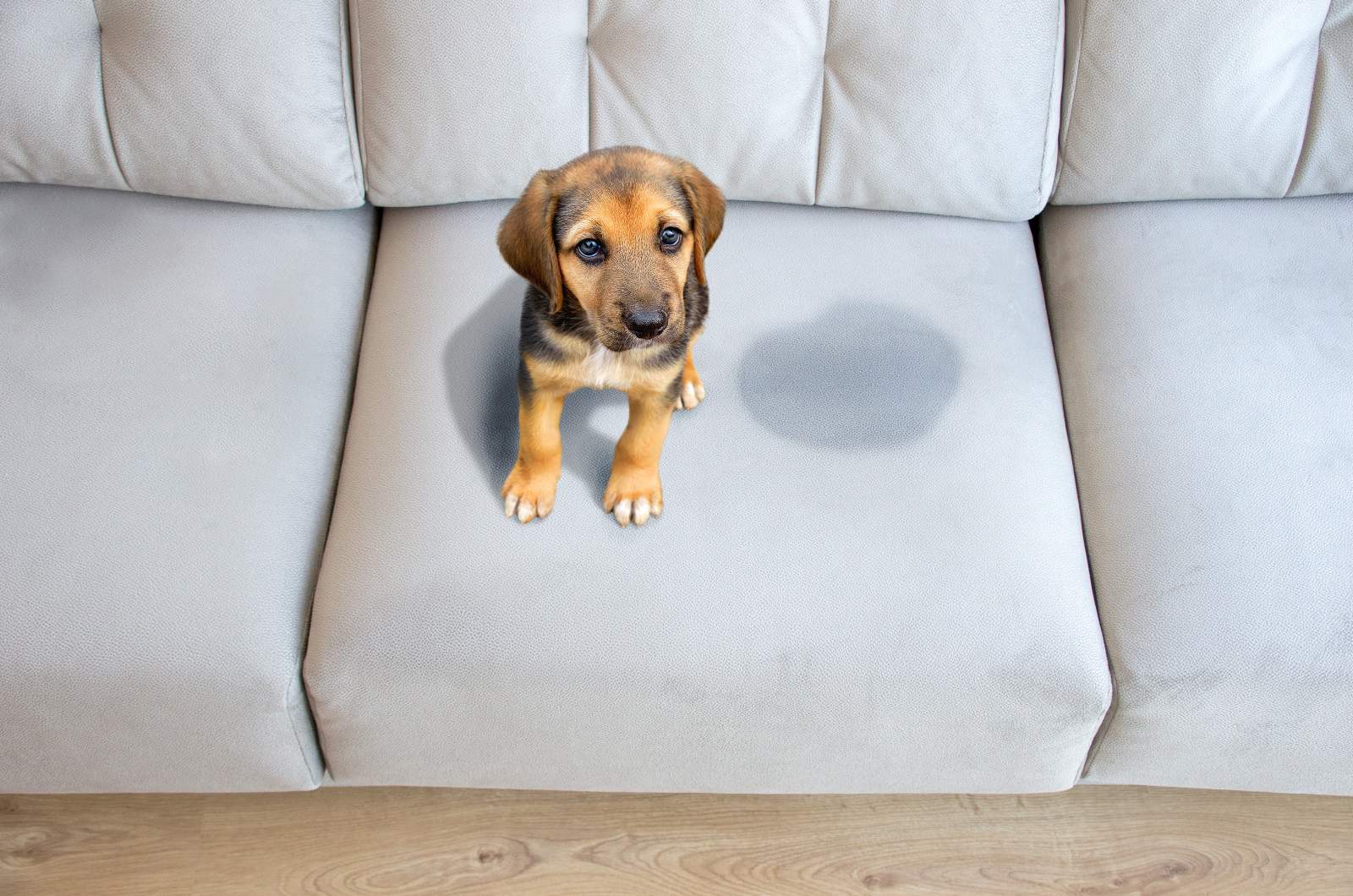
Not only bladder, but urethral stones can also lead to Urinary Incontinence. This happens when a dog has a partial blockage of the urethra caused by a stone.
When this happens, the bladder can never fully empty, which causes the urine to fill in until it has nowhere to go but go on its own around the blockage.
If the stone continues to grow or a new one forms, the symptoms are the opposite of incontinence. The dog either won’t be able to urinate or will strain to do it. You will also notice blood in your dog’s urine.
5. Hormone-responsive UI
There is another name for this health condition: idiopathic urinary incontinence (or Primary Sphincter Mechanism Incompetence (PSMI).
Idiopathic means we don’t know what the cause of the health condition is. It usually happens in middle-aged female dogs, but it can happen to male dogs as well.
A female doesn’t have to be spayed to develop this type of hormone-related UI.
It has been noticed that bigger dogs (weighing more than 44 pounds) are more likely to develop this condition.
6. Spaying
Similar to PSMI, spaying can lead to Urinary Incontinence in female dogs as well. This is because estrogen and progesterone have an influence on the bladder sphincter.
After spaying, the levels of both hormones drastically decrease, leading to UI.
This doesn’t happen to every female dog after spaying, and it usually starts to show up 2 to 3 years after spaying.
It happens in around 30% of spayed female dogs.
Read Next: How Will My Female Dog’s Behavior Change After Spaying?
7. Bladder Tumor
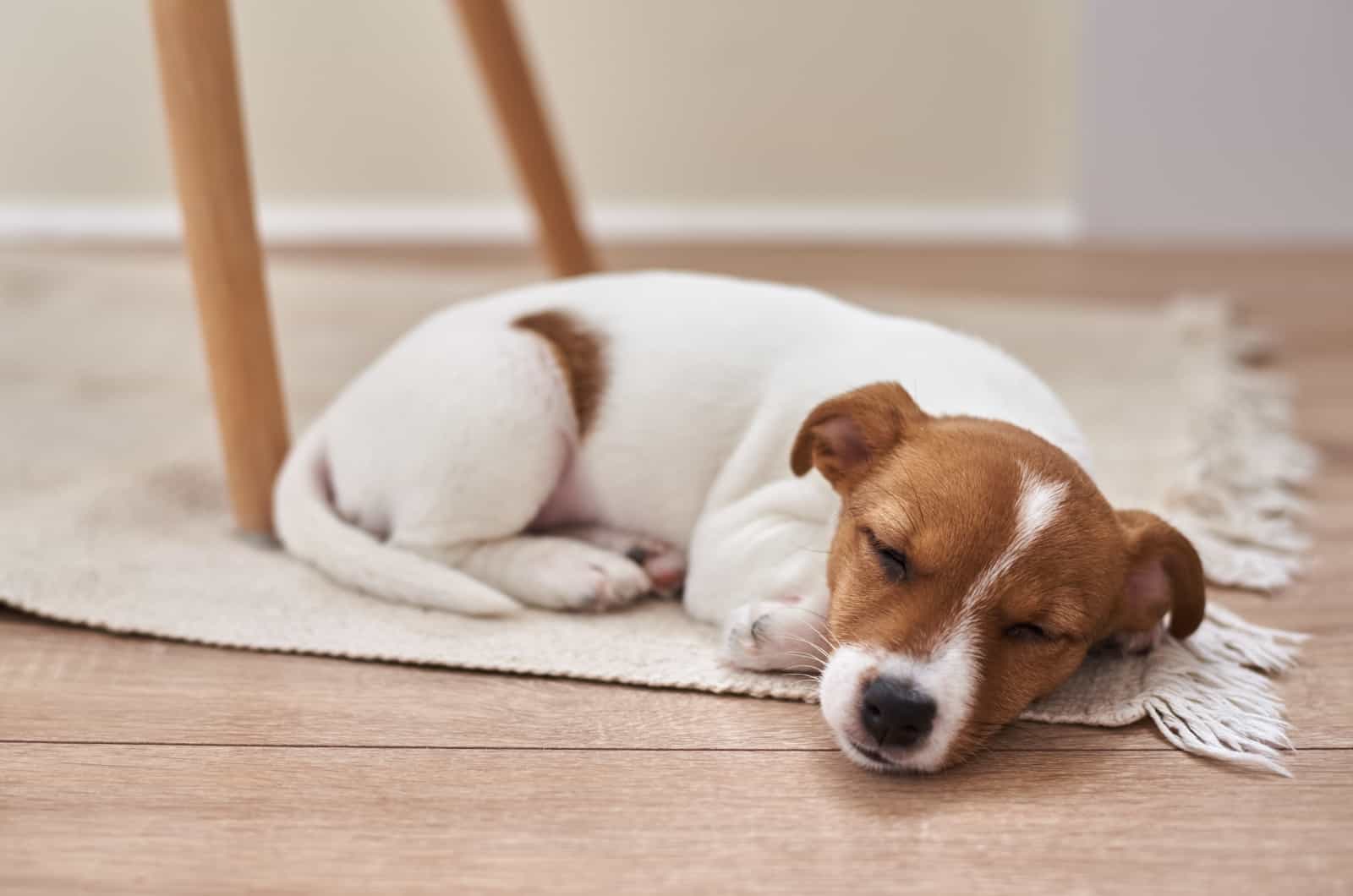
Both malignant and benign tumors can lead to urinary incontinence in dogs. This incontinence can either happen all the time or only at night when the dog sleeps. However, after some time as the tumor grows, the UI will happen all the time, no matter if the dog is sleeping or not. Other symptoms are:
- Blood in urine
- Frequent urination
- Persistent UTI
When you take your dog to the veterinary clinic, a vet will need to do bloodwork and an abdominal ultrasound to confirm it is a bladder tumor.
After that, treatment varies depending on the type of tumor.
8. Cushing’s Disease
This serious disease is caused by a tumor of the pituitary or adrenal glands. This tumor can either be malignant or benign.
The main symptoms of Cushing’s disease are not UI, but increased thirst, which leads to more water intake, which has UI consequences.
However, UI is not one of the first symptoms of Cushing’s disease in dogs.
You will also notice hair loss, recurring skin infections, and fragile skin, and the most common symptom is a swollen belly without pain.
9. Diabetes
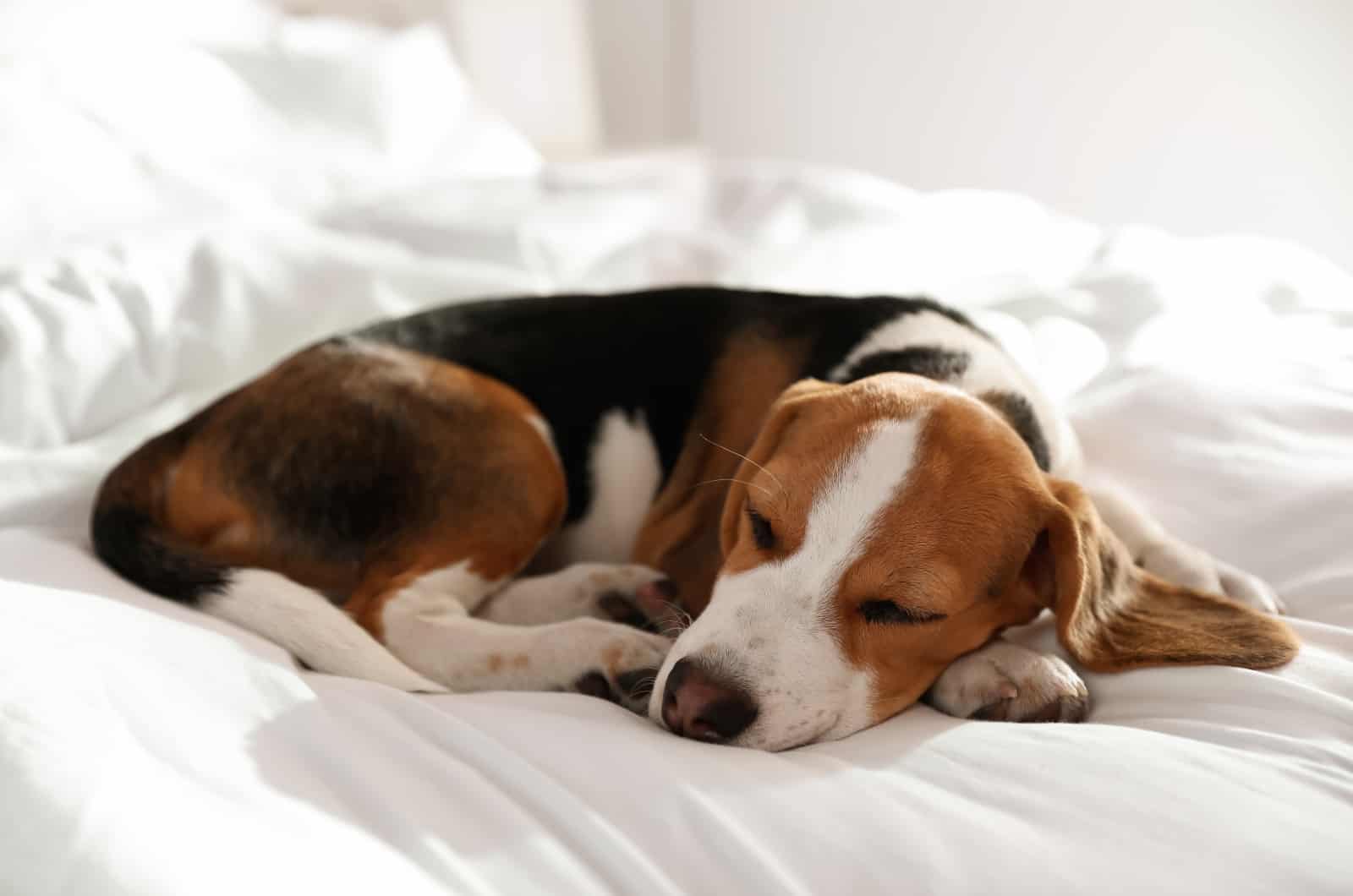
The full medical name is Diabetes Insipidus, and it is not that common in dogs. However, when it does happen, one of the symptoms can be Urinary Incontinence.
This happens because of the increased water intake. More water leads to more urine production.
After some time, the sphincter’s strength weakens due to constant urine pressure, which leads to UI while the dog sleeps.
Unfortunately, diabetes is not curable. There are ways to prolong life and make it more comfortable, but eventually, once you notice the signs that your dog is at the end of its fight, you will have to make the hardest decision.
10. Urine Retention
This is a condition that happens consciously. Simply said… a dog holds its pee for a long time, not wanting to go outside or anywhere because of some underlying stress issue.
Your dog is scared or anxious, and she doesn’t want to pee during the day.
But, when she sleeps, the muscles relax (too much) because there is no direct conscious decision to keep the urine in, which leads to UI.
While this can be put under behavioral issues, the anxiety and stress in your dog can be caused by pain. This means you have to take your dog to the vet for a full exam in order to exclude possible health issues.
11. Medication
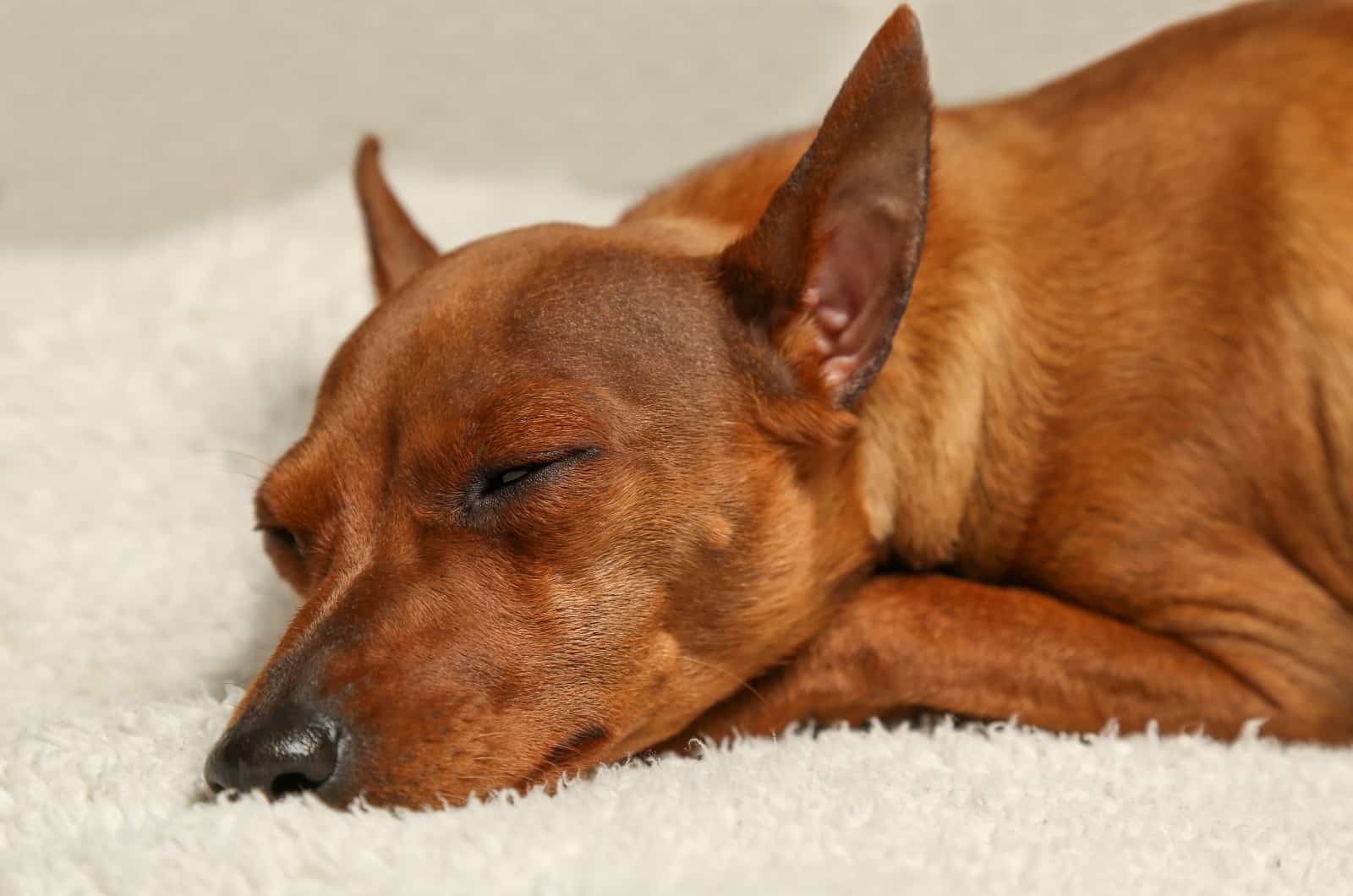
Some medications used in the treatment of some other health conditions can be responsible for your dog peeing in her sleep.
The most common medications used on dogs that can lead to UI are prednisone and furosemide.
If you notice your dog has started to pee in her sleep soon after she was prescribed some of these meds (or some other similar), call your vet to change the medications or find another solution to the problem.
12. Brain Damage
If the part of the brain responsible for controlling the bladder is damaged in any way, it can lead to Urinary Incontinence in your dog. The inability to hold the urine can happen during sleep as well as when a dog is awake.
The part of the brain responsible for bladder control is located in the brainstem. This is the part of the brain that dogs cannot control voluntarily, but the cerebral cortex is responsible for the voluntary control of the bladder.
Damage to this part of the brain also leads to UI in dogs.
13. Congenital Anomalies
The last on our list are anatomical anomalies that a dog is born with. These anomalies are numerous, but they all have one thing in common: the inability to control urine from exiting the bladder during sleep.
Depending on the anomaly, some can be surgically treated. But, in some cases, the anomaly is too big to be completely repaired or removed, so your dog will always have these issues.
In this case, you will have to buy some dog diapers and help your dog get used to them.
The Conclusion
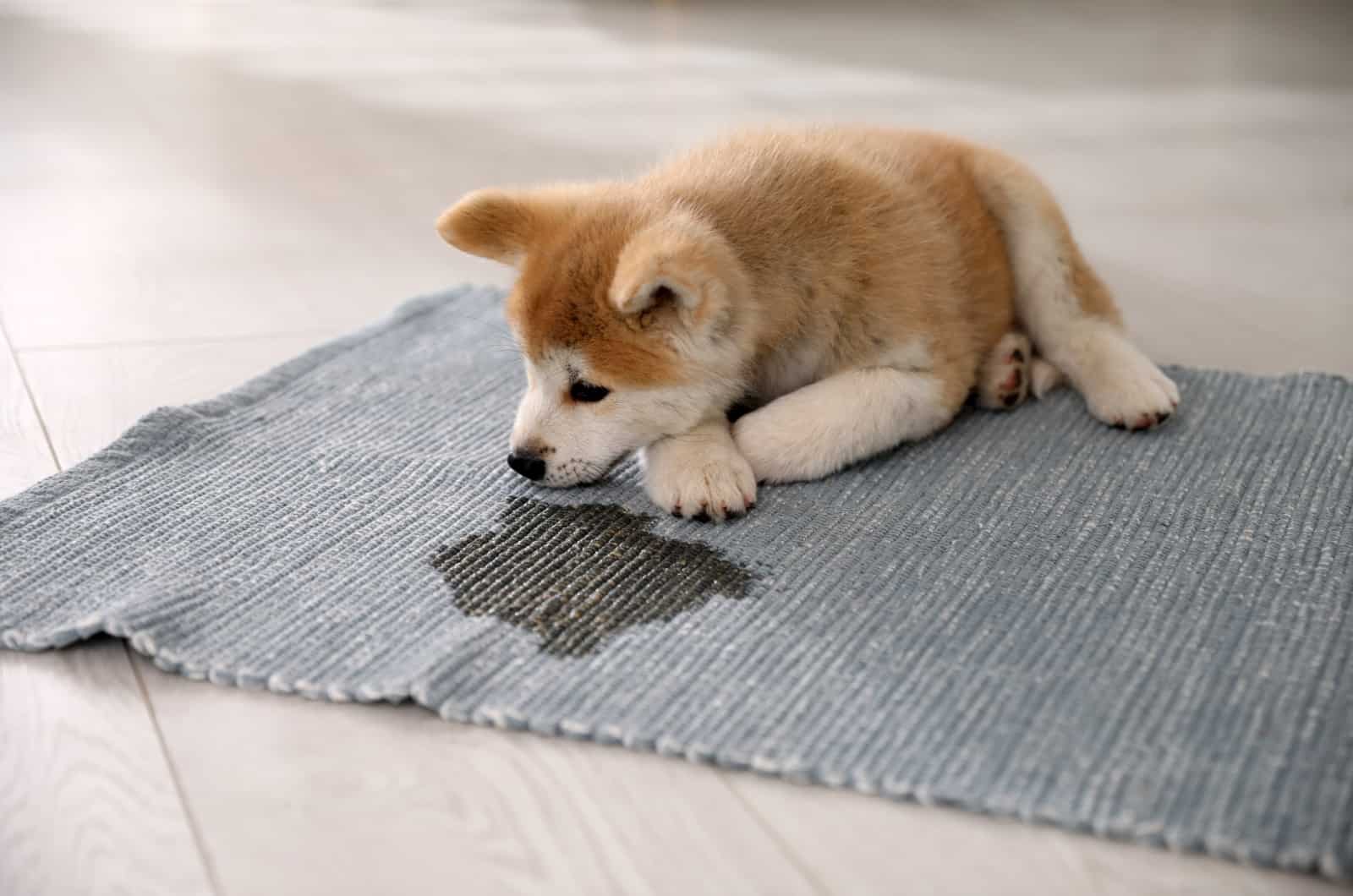
If you noticed your dog is peeing in her sleep, there is a possibility that she either has one or some of these 13 health conditions.
In essence, all of these conditions have an impact on the bladder sphincter, whether directly or indirectly. The most difficult to treat are those related to nerve or brain damage.
However, you have to know for sure what the problem is, and the only way to do that is to take your dog to the veterinarian if you notice any of the symptoms we talked about.
Only then will you be able to start treatment. Of course, this will have to be prescribed by a veterinarian after a thorough exam, which often includes bloodwork and other tests.













